Foodies and big-time chefs like Thomas Keller go crazy for fleur de sel. This finishing salt appears in fancy eateries and cookbooks the world over, and in the early 2000s, it was not uncommon to see diners in a high-end restaurant sprinkle a pinch of fleur de sel on their plates from their own personal stash.
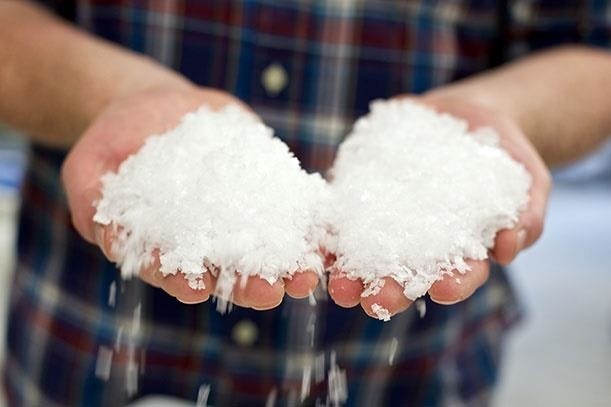
But is this an ingredient that will really make a difference for the average home cook? In my opinion, absolutely.
Fleur de sel is one of those small but indispensable touches, like good quality olive oil or fresh herbs, that changes an ordinary meal into a culinary experience. You may not want to use it every single day, but there are certain dishes that will be markedly improved when you do.
When & Why Should You Use Fleur De Sel?
Because of its delicate nature and higher price relative to other salts, fleur de sel isn't meant for seasoning a dish while you cook it. If you expose it to high temperatures, it will melt and lose its unique character.
Instead, you should use sprinkles of fleur de sel on anything that needs a little extra oomph right before it's consumed: salads, fish, meat, fruit, vegetables, and dessert. Some even sprinkle it on their oatmeal (guilty).

Fleur De Sel Gets an "A" in Chemistry
As a general rule, the less refined the salt, the larger the proportion of minerals and moisture. By definition, fleur de sel is the most complex in flavor. It is also considered (perhaps to no one's surprise) to be among the saltier of salts, thanks to trace calcium and magnesium chlorides. These compounds absorb moisture, thereby pre-dissolving the minerals in the salt and delivering flavor immediately to the taste buds.
No wonder fleur de sel has a reputation for tasting like the ocean.
Chemistry might also explain the salty-sweet craze that's put fleur de sel on the map. Salt not only enhances the flavor of ingredients like caramel and chocolate, it inspires a chemical reaction in our bodies.

We have sugar sensors in our mouths to detect glucose, an important source of energy. The intestinal glucose sensor, located in our sweet-sensitive taste cells, is triggered by sodium, which alerts the cell to register sweetness.
What Makes Fleur De Sel So Special?
Much like coffee beans or wine grapes, the quality of fleur de sel depends on nuance (i.e. natural environment, production, etc.). According to Harold McGee's On Food and Cooking, salt beds are subject to the same procedures as agricultural crops, which are managed, harvested, and processed.

Fleur de sel is a variety of sea salt most commonly associated with the northern Atlantic coast of France (aka the Brittany region). Its name, literally "flower of salt," summons its reputation as the finest and most delicate of salts; some varieties cost up to 200 times the amount of table salt.
Soil is the habitat of crops; sea water is fleur de sel's. Sourced from the salty Atlantic Ocean, the water is channeled into shallow marshes, and after a certain period of evaporation, floats to the surface in a fine layer. The salt is delicately collected with a rake since salt crystals are incredibly fragile. Traditionally, only women were allowed to collect fleur de sel due to their correspondingly "delicate" comportments.

Once harvested, fleur de sel is flakey and takes the form of flat masses or hollow pyramids. According to salt master Mark Bitterman, each crystal has the complexity of a snowflake; their variation in size and shape creates, in his words, a modulated sensation.

Due to the salt's high moisture content, the crystals often stick together—and to their packaging (see section below for the chemistry behind this). That moisture means the salt won't dissolve right away on your tongue, allowing the taste to linger in your mouth.
How Does It Compare to Other Salts?
Evaporation also dictates the harvesting of kosher and table salt, but the process is different. One major nuance is source: while fleur de sel comes from the sea, table and kosher salt are derived from inland salt deposits, a relic of ancient seabeds.
To extract regular salt, water is injected into mines to dissolve the minerals; the resulting brine is heated to evaporate the water, and as the various minerals precipitate, the sodium chloride is isolated. Bam—table salt.

Kosher salt is processed similarly, but manipulated during the evaporation process. It is raked to produce cubic, larger-grained crystals, thus increasing its absorbency. There's a reason for this: Jewish law dictates that the blood of an animal be fully extracted before consumption, which the large surface area of kosher salt enables.
How Much Should I Expect to Pay for Fleur De Sel?
Just as the cost of wine varies (affordable to astronomical), so too does fleur de sel. The variation is based on quality, but also on where you buy it.
In France, a 250g (8 oz) bag of the most coveted fleur de sel, from the Guérande region, costs less than $9 (U.S.). Sure, you can get pounds of table salt for the same amount, but those 8 ounces will carry you through the entire year and probably beyond.

In the States, the same variety and weight of fleur de sel costs around $24 on Amazon. If you prefer to support U.S. businesses or want to pay a lower premium, Williams-Sonoma sells a 250g tub of fleur de sel, from the island of Ré off the Atlantic coast of France, for $13 (plus $5 in shipping fees).

Popular Substitutes for Fleur De Sel
If you don't want to shell out the big bucks, but want a near approximation of fleur de sel's effects, you have a couple of options.
- Maldon salt: A "flake salt," so-called because of its flat shape rather than compact, granular shape. Its crunch and distinct, salty punch resemble that of fleur de sel, but the flavor won't linger in your mouth since Maldon salt is low in moisture. It's also best used as a finishing salt.

- Sea salt: Want to stick with unrefined sea salt? You'll find many varieties in most grocery stores for less than half the price of fleur de sel. Sea salt most closely matches the texture and composition of fleur de sel: both are crunchy, deliver strong flavor in small concentrations, and contain trace minerals (that's where their unrefined nature comes in).

What you're going for is crunch, which most large-grained salts can offer. If you decide to go this route, you don't have to change measurements: one teaspoon of fleur de sel can be replaced with the same amount of Maldon salt. The flavors and quality will differ, but the salty punch and crunch will remain.
That's not to say that you shouldn't experiment. Have a taste for yourself: see how much flavor is packed into one granule, then act accordingly.
Or, You Can Fake Your Own at Home
If you're feeling enterprising, you can also "hack" sea salt to recreate the grain and feel of fleur de sel. Over at CHOW, user dyi gourmet created the following method.

Step 1: Boil Sea Salt in a Pan
Put 1 Tbsp of sea salt in a stainless steel frying pan and cover with enough water to dissolve it. Bring to a hard boil until the water evaporates.
Tip: just as the water is nearly evaporated, the salt bubbles intensify and creates the flake texture. Don't let it get super white dry because the salt will stick more to the pan surface than the salt.
Step 2: Strain & Repeat as Necessary
Scrape off with a metal spatula. Try to make long strokes to preserve as many flakes as possible. Put through a medium fine strainer to pull out the large flakes from the fine salt dust. Repeat the evaporation with the fine salt until you have enough for your recipe.
Disclaimer:
This method hardly replicates the dynamic union of sun, minerals, and water used to make real fleur de sel, but it makes the salt melt on your tongue, mimicking the essential chemical reaction your recipe calls for.
Just updated your iPhone? You'll find new emoji, enhanced security, podcast transcripts, Apple Cash virtual numbers, and other useful features. There are even new additions hidden within Safari. Find out what's new and changed on your iPhone with the iOS 17.4 update.




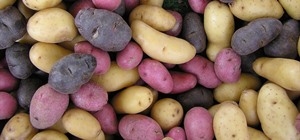


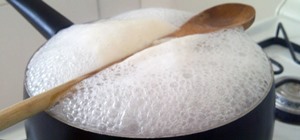
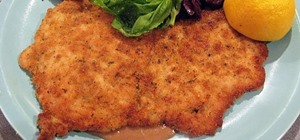
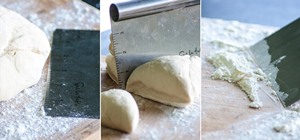













Be the First to Comment
Share Your Thoughts